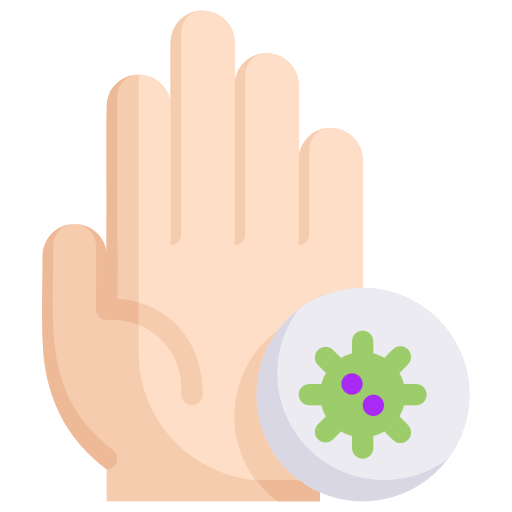Understanding Augmentin: from Prescription to Pharmacology
Augmentin, a formidable player in the pharmaceutical arena, marries the efficacy of amoxicillin with the enzyme-inhibiting power of clavulanic acid, crafting a potent antibiotic designed to combat a broad spectrum of bacterial infections. This combination, ingeniously engineered, targets bacteria by impairing their ability to form cell walls, thereby curbing their proliferation. The inclusion of clavulanic acid is crucial; it shields amoxicillin from degradation by bacterial enzymes, significantly amplifying the antibiotic's spectrum of activity. This synergy extends Augmentin's prowess to include bacteria that would otherwise be resilient, marking a significant evolution in antibiotic therapy.
The therapeutic applications of Augmentin are vast, encompassing a range of infections from respiratory tract afflictions to urinary tract infections, skin infections, and more. Its versatility and effectiveness make it a preferred choice among healthcare professionals, especially in cases where other antibiotics have failed due to resistance. The specific utilisation of Augmentin, however, is determined by the nature of the bacteria and the site of infection, highlighting the importance of microbial culture and sensitivity testing in guiding antibiotic therapy.
The administration of Augmentin is carefully calibrated based on the severity and type of infection, encapsulating the essence of personalized medicine. This antibiotic is not only a testament to the advancements in pharmaceutical sciences but also illuminates the importance of judicious antibiotic use. In a landscape where antibiotic resistance poses a growing threat, the strategic deployment of Augmentin underscores a critical balance between therapeutic effectiveness and the stewardship of antibiotic resources.
The Power Duo: Amoxicillin and Clavulanic Acid Explained
Augmentin, a formidable antimicrobial agent, owes its efficacy to the synergistic interplay between amoxicillin and clavulanic acid. Amoxicillin, a penicillin derivative, operates by inhibiting the synthesis of bacterial cell walls, thereby rendering the bacteria incapable of survival. Its broad-spectrum activity makes it a weapon of choice against a variety of pathogens. However, the bacterial arsenal includes β-lactamase enzymes that can neutralize amoxicillin, undermining its therapeutic potential. This is where clavulanic acid comes into play. Clavulanic acid, a potent β-lactamase inhibitor, shields amoxicillin from enzymatic degradation. By doing so, it extends the antimicrobial efficacy of amoxicillin against β-lactamase-producing resistant strains, making what is augmentin an indispensable ally in the fight against bacterial infections.
The clinical implications of this combination are profound. By preserving the antibiotic activity of amoxicillin against resistant strains, Augmentin enhances the spectrum of conditions treatable with oral antibiotics. It is indicated for various infections, including respiratory, urinary tract, skin, and soft tissue infections, where resistant pathogens might otherwise limit treatment options.
Understanding the pharmacodynamics of Augmentin enhances its clinical utility. The amoxicillin component inhibits bacterial growth by interfering with the synthesis of peptidoglycan, an essential component of the cell wall. Clavulanic acid, although not significantly antimicrobial on its own, ensures the durability of this effect by inactivating resistance mechanisms. This combination does not merely add to the quantity of bacterial targets but qualitatively transforms the approach to treating infections, allowing clinicians to counter bacterial resistance more effectively.
Adverse effects associated with Augmentin, while typically mild, stem from its broad-spectrum mechanism. Gastrointestinal upset, including nausea and diarrhea, is among the most common, highlighting the importance of a judicious prescription process. Nevertheless, the impact of this power duo on modern medicine cannot be overstated. By offering a robust defense against a range of bacterial threats, Augmentin symbolizes a significant advance in antimicrobial therapy, exemplifying the potential of combining pharmacological agents to overcome resistance and extend the efficacy of existing antibiotics.
Navigating the Prescription Process: Insights and Tips
Navigating the intricacies of the prescription process for Augmentin, a formidable ally in the battle against bacterial infections, necessitates a nuanced understanding of its formulation and purpose. Comprised of amoxicillin and clavulanic acid, this combination enhances the efficacy of treatment by not only inhibiting bacterial growth but also overcoming resistance mechanisms that bacteria may deploy. When healthcare professionals consider what is Augmentin prescribed for, the spectrum of use is broad, encompassing various infections from respiratory tract infections to skin conditions. The decision to prescribe this antibiotic is anchored in a clinical evaluation, underpinned by understanding the patient's medical history, potential allergies, and the specifics of the bacterial infection.
Ensuring an appropriate prescription involves a dialogue between patient and healthcare provider, where openness about past medical reactions and current medications is paramount. This communication facilitates the customization of treatment, taking into account potential drug interactions and contraindications. For instance, the presence of renal impairment may necessitate a dosage adjustment, underscoring the importance of thorough patient assessment and monitoring. The elucidation of the prescription process should also emphasize adherence to the prescribed course, a critical factor in combating bacterial resistance and ensuring the success of treatment.
Moreover, the prescription journey is augmented by patient education, equipping individuals with the understanding necessary to navigate side effects and recognize signs of potential complications. A comprehensive approach to patient counseling can significantly mitigate apprehensions regarding antibiotic use, especially concerning common side effects such as gastrointestinal discomfort. Empowering patients with knowledge and strategies for side effect management fosters a collaborative effort in the healing process, optimizing outcomes while minimizing discomfort. Therefore, the convergence of informed prescription practices and patient engagement in the therapeutic dialogue defines the pathway to successful treatment with Augmentin, marking a cornerstone in contemporary antimicrobial therapy.
Augmentin's Role in Fighting Bacterial Infections
Augmentin, a synergistic combination of amoxicillin and clavulanic acid, represents a cornerstone in the arsenal against bacterial infections. This pharmaceutical marvel exploits the bactericidal properties of amoxicillin, a beta-lactam antibiotic that inhibits the synthesis of bacterial cell walls, leading to their eventual demise. Clavulanic acid, on the other hand, plays a pivotal role by neutralizing beta-lactamase enzymes produced by resistant bacteria. This defense mechanism employed by certain bacteria degrades amoxicillin, rendering it ineffective. However, when combined, this duo extends the spectrum of amoxicillin’s action, encompassing an impressive array of bacterial adversaries.
Understanding how Augmentin operates at the molecular level provides insight into its effectiveness across various infections. The clavulanic acid component is particularly adept at binding to and deactivating the beta-lactamase enzymes. This protection allows amoxicillin to perform its bactericidal duty unimpeded, attacking the peptidoglycan layer crucial for bacterial cell wall integrity. Consequently, Augmentin is efficaciously employed in treating infections deemed resistant to other antibiotics, showcasing its indispensable value in clinical settings.
Moreover, the broad-spectrum efficacy of Augmentin enables its use in combating a diverse range of infections, from those affecting the respiratory tract to urinary tract infections, skin infections, and even otitis media. Its versatile application stems from the extensive research and clinical trials that have established its safety profile and effectiveness, guiding its prescription in the battle against bacterial manifestations.
However, as with any potent medical tool, the judicious use of Augmentin is paramount to avoid the pitfalls of antibiotic resistance, a looming global threat. Healthcare professionals and patients alike must be educated about the importance of adherence to prescribed courses, and the risks associated with misuse. In this context, Augmentin's role transcends its immediate therapeutic benefits, embodying the broader principles of responsible antibiotic stewardship. Through such conscientious use, Augmentin continues to be a linchpin in modern medicine’s ongoing crusade against bacterial infections.
Understanding Side Effects and How to Manage Them
When considering the administration of any antibiotic, including Augmentin, awareness and management of potential side effects are paramount. This medication, a synergistic formulation combining amoxicillin with clavulanic acid, is lauded for its efficacy against a broad spectrum of bacterial infections. However, its consumption can be accompanied by various side effects, ranging from mild gastrointestinal disturbances to more severe allergic reactions. Commonly reported issues include nausea, vomiting, diarrhea, and skin rashes, which are typically mild and transient. More seldom, individuals might experience anaphylaxis, a severe allergic reaction necessitating immediate medical intervention.
Managing these unwanted reactions involves a multifaceted approach. Initially, healthcare professionals might recommend taking Augmentin at the start of a meal to mitigate gastrointestinal side effects, which are among the most frequently encountered. Staying hydrated is similarly crucial, particularly for those experiencing diarrhea. Moreover, for individuals with a history of allergic reactions to penicillins, alternative antibiotics should be considered, underscoring the importance of disclosing medical history to prescribers. In the event of severe side effects, prompt communication with a healthcare provider is critical to adjusting the therapeutic strategy, which may include discontinuing the medication.
Equipping patients with knowledge about potential side effects and their management enhances treatment adherence and outcomes. It is essential for healthcare providers to engage in open dialogues with patients about these possible adverse effects and to tailor recommendations based on individual health profiles. Ultimately, this empowers patients in their healthcare journey, promoting safer and more effective use of Augmentin in combating bacterial infections.
The Impact of Augmentin on Modern Medicine
Augmentin, a synergistic combination of amoxicillin and clavulanic acid, has significantly advanced the field of antibacterial therapy. Its development marked a pivotal moment in modern medicine, introducing a solution capable of overcoming antibiotic resistance, a growing concern within the medical community.
The widespread adoption of Augmentin in clinical practice exemplifies its impact on healthcare. By providing an effective treatment for various infections, including those resistant to other antibiotics, it has played a crucial role in reducing the burden of infectious diseases worldwide. Its ability to fight a wide range of bacteria has made it a cornerstone in the management of both community-acquired and hospital-acquired infections, thereby significantly improving patient outcomes. Moreover, its use has underscored the importance of rational antibiotic use to prevent the development of resistance, shaping antibiotic stewardship programs.
On a larger scale, Augmentin's success has spurred further research and innovation in the quest for new antibiotics capable of outmaneuvering bacterial resistance mechanisms. Its story reflects the ongoing battle against bacterial infections and the necessity for continuous innovation in antibiotic development. As the medical community pushes forward, Augmentin remains a testament to the progress achievable when scientific ingenuity is applied to meet clinical challenges, setting a standard for future advancements in the field of antimicrobial therapy.
Content Manager: Dr. Paul Edward Sax















